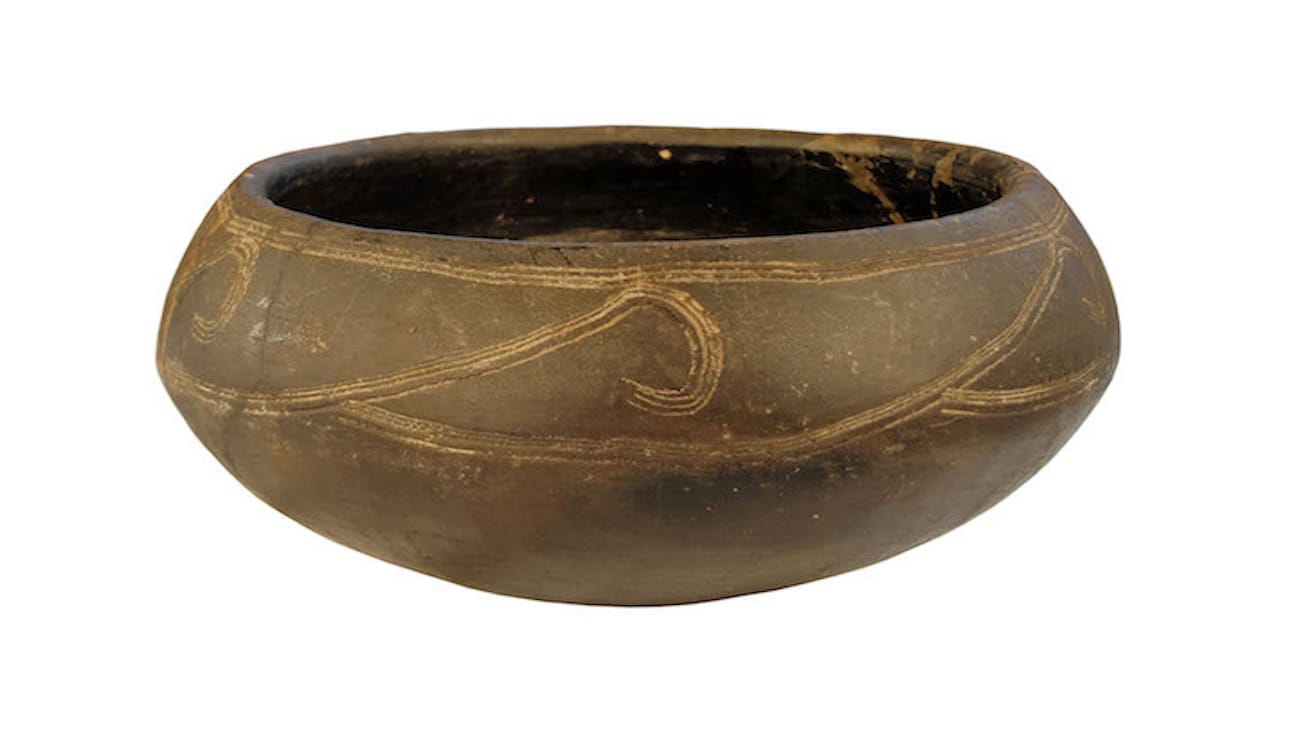
Choctaw Resistance to Removal from Ancient Homeland (Part 4)
Iti FabvssaPublished September 1, 2014This month’s edition of Iti Fabvssa concludes a four part series examining ways in which Choctaw people resisted Removal from the homeland and the Trail of Tears. The previous three editions focused on armed resistance, on contesting the Dancing Rabbit Creek Treaty, and on refusing to remove from the Choctaw homeland. This month, Iti Fabvssa focuses on a more passive, but not less important way that Choctaw people have resisted leaving the homeland, bringing a part of the homeland with them to Oklahoma.
Many of the Choctaw people who traveled the Trail of Tears in the 1830s had the opportunity to take very little with them. Many were only able to take what they could carry in their hands. In surviving collections of Choctaw family heirlooms brought from Mississippi to what is now Oklahoma on the Trail of Tears, one of the most common objects are small, carefully crafted clay eating bowls. These are made in the traditional Choctaw style, except that they are smaller than the communal eating bowls usually used in Choctaw households during this time period.
Why were these small bowls carried west 550 miles to what is now Oklahoma in relatively large numbers? The functional purpose of the bowls is obvious, but there is probably a deeper reason. From a traditional Choctaw perspective, the earth, and particularly the Choctaw homeland are sacred. The earth is seen as the mother of all life. The course of life follows a circle, and after death, an individual’s body returns to the earth to decompose and then to be reincorporated into the bodies of new plants and animals. From a traditional perspective, the Choctaw ancestors are literally a part of the earth of the homeland, as well as the plants and animals there. The respect that early Choctaw people had for the earth is seen in the care and effort that was put into building large earth mounds.
That same respect is also evidenced in the small, unassuming eating bowls that were carried across the Trail of Tears. These bowls, made from native clay, sand, and burned animal bone, are literally a small part of the Choctaw homeland, but they are more than just that. Their raw materials were mixed together and shaped according to a pottery tradition developed by the hands of 100 generations of Choctaw potters living in the Choctaw homeland. When Choctaw people brought these bowls with them on the Trail of Tears, they were bringing objects that were simultaneously pieces of the homeland and symbols of the ancient indigenous relationship that Choctaw people maintained with that homeland. By carrying these small, but highly significant clay bowls, Choctaw people were able to resist being removed from at least a small part of the homeland on both a physical and an intellectual level.
While the clay eating bowls are the most concrete example, the technique of resisting Removal by taking a part of the homeland to Oklahoma was and is accomplished in a variety of ways. The Choctaw ancestors were Indigenous people. They considered themselves as a living part of their homeland, intimately connected with the plants, animals, soil and water around them. These connections influenced all aspects of Choctaw traditional life and thought. Choctaw language, traditional food, traditional political structure, oral histories, and all other aspects of Choctaw traditional life ultimately originate out of the hundreds of generations of time through which Choctaw people interacted with the homeland as Indigenous people. Even 184 years after removal began, the Indigenous relationship that Choctaw people had with the homeland is still manifest in the Choctaw Nation of Oklahoma today through words in the Choctaw language that describe plants and animals in the homeland, through social dances that honor animals from the homeland, through ancient stories, passed down from generation to generation that are set in the homeland, through traditional foods that come from plants and animals native to the homeland, and through traditional arts that incorporate materials from the homeland. Because the Choctaw homeland is an inseparable part of Choctaw traditional culture, as the Oklahoma Choctaw community works to preserve and strengthen aspects traditional culture, we are also resisting the separation from our homeland that Removal entails.